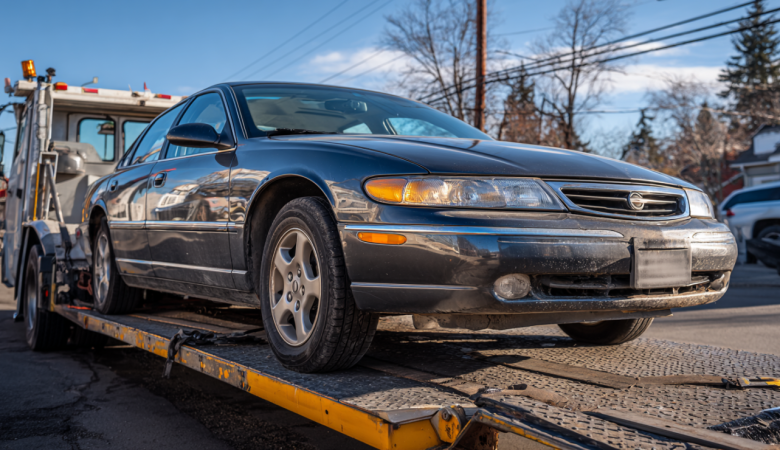Learning how to prepare your car for shipping is the key to a safe, efficient, and stress-free transport experience. Whether you’re moving a daily driver, a restoration project, or a valuable collector vehicle, proper preparation helps prevent delays and reduces the risk of damage. Domestic transport services for cars follow a structured process that requires your cooperation, from documentation to inspection and everything in between.
This guide explains the essential steps to follow before pickup, the best ways to secure your vehicle, and tips for a smooth long-distance car transport. By applying efficient strategies for transporting cars, you can ensure your vehicle reaches its destination in the same condition it left.
Understanding Auto Vehicle Shipping
Before you begin, it helps to understand what auto vehicle shipping involves. Domestic transportation for cars usually takes place by truck, though rail transport for cars is available in some regions. Most customers choose between open and enclosed transport, depending on their vehicle’s value, type, and budget.
Open carriers are a common, cost-effective option for everyday vehicles. However, for high-end or vintage cars, selecting enclosed car transport for maximum protection is a better choice. Enclosed trailers shield your car from dust, debris, and unpredictable weather. This option suits anyone concerned about protecting your vehicle from potential damage, especially those moving a classic vehicle or an exotic model using specialized transport services for exotic cars.
Choosing between these options depends on your priorities. Open transport is economical and widely available, while covered transport for cars provides greater peace of mind for valuable vehicles. Both methods are part of professional shipping auto transport services.
Step 1: Research Reliable Transport Companies
The first step in how to prepare your car for shipping is finding a dependable carrier. Reliable transport companies for cars are properly licensed, insured, and experienced. Spend time researching their reputation, reading reviews, and confirming that their service matches your needs.
When speaking with transport vehicle services, ask about their process, insurance coverage, and pickup options. Check if they provide door-to-door delivery or if you’ll need to bring your vehicle to a terminal. Understanding your pickup and delivery location early avoids last-minute surprises.
If you’re handling special considerations for classic car transport, select companies that use specialized equipment for delicate vehicles. Providers like EasyHaul know the best practices for classic car transport and can help minimize potential damage during loading and unloading.
Step 2: Gather the Necessary Documentation
Once you’ve chosen a carrier, prepare all paperwork before pickup. You’ll need proof of ownership, registration, and a photo ID. Most transportation services for cars require you to sign a bill of lading, a document that outlines your vehicle’s condition and acts as a receipt for shipment.
Inspect the bill of lading closely and make sure all vehicle details match before signing. This record protects you if there are disputes about the car’s condition after delivery. Keeping copies of every form and photo can be invaluable later if any issues arise.
Step 3: Inspect and Clean Your Vehicle
Cleaning and inspecting your car are key parts of preparing your vehicle for shipment. A clean car helps both you and the carrier notice scratches, dents, or other damage before loading. Take detailed photos from multiple angles and store them with your documents.
Next, remove any personal items from the cabin and trunk. Transport companies for cars are not responsible for personal belongings left inside, and unsecured items can cause damage during transit. If your car has removable accessories like roof racks or spoilers, it’s best to take them off to prevent loss or harm.
Preparing your car also involves checking for leaks and mechanical issues. Make sure fluid levels are normal, the tires are properly inflated, and the battery is secure. If your vehicle is inoperable, inform the carrier in advance so they can arrange specialized equipment such as a winch or liftgate. Proper planning reduces the risk of additional fees or delays.
Step 4: Secure or Disable Loose Components
Many people overlook this stage in preparing their car for shipping. Folding in mirrors, retracting antennas, and disabling alarms are small steps that can make a big difference. Alarms that go off mid-transport can drain the battery or cause unnecessary delays.
For convertible cars, ensure the top is up and sealed tightly. If your vehicle has a soft top, enclosed transport might be the safest choice to avoid exposure to weather. Securing all parts and accessories ensures that nothing shifts, breaks, or detaches during movement.
Step 5: Check Fluids, Tires, and Fuel
Before pickup, perform a final check of your car’s essential systems. This is especially important if you’re preparing a car for shipping over a long distance. Verify that the brakes and steering work properly and there are no fluid leaks.
Tire pressure should adhere to the manufacturer’s recommendations, as over- or under-inflated tires can cause issues when the car is driven onto or off the trailer for transporting cars. Fuel levels should be kept around a quarter tank—enough for loading and unloading, but not so much that it adds unnecessary weight to the trailer for transporting cars.
Simple checks like these can prevent mechanical issues during the shipping process and make delivery smoother.
Step 6: Disable Toll Tags and Remove Custom Features
Before handing over your vehicle, remember to remove toll tags or parking passes from windshields. If left active, they could charge you for tolls incurred by the carrier’s truck. Additionally, disable any GPS tracking devices that might interfere with the transporter’s route management.
If your car has unique customizations, such as aftermarket ground effects or body kits, discuss these with the carrier beforehand. Specialized transport services for exotic cars often provide solutions for low-clearance vehicles and can use ramps or lifts to prevent scraping. Communicating these needs in advance ensures safe handling and prevents misunderstandings.
Step 7: Confirm Delivery Details
Before the transport begins, confirm all arrangements with your provider. Review the contract, confirm the pickup window, and ensure you understand the estimated delivery date. Ask whether the company provides tracking updates or a point of contact throughout the trip.
For door-to-door service, make sure someone is available at both ends to release and receive the car. If you can’t be there, authorize a trusted representative to handle the inspection and sign the bill of lading at delivery. Clear communication helps maintain accountability and guarantees a smoother process.
Step 8: Upon Delivery, Inspect Again
When your vehicle arrives, perform a final inspection before signing off. Compare the car’s condition with the photos and notes you took earlier. If you notice new scratches, dents, or mechanical problems, document them immediately and note them on the bill of lading.
Even though professional transport for cars aims to prevent damage, occasional issues can happen. Reporting them right away ensures your claim is valid and can be processed quickly.
Taking the time for a thorough post-delivery check also gives you peace of mind, knowing your vehicle was handled correctly from start to finish.
Special Considerations for Classic and Salvage Cars
Shipping a classic or salvage car demands extra care. For rare or delicate vehicles, enclosed transport for cars is strongly recommended. It shields against debris, weather, and prying eyes. Carriers offering specialized transport services for exotic cars often provide padded tie-downs, soft straps, and hydraulic liftgates for safer loading.
For classic models, preparing a car for transport may also involve draining some fluids or protecting delicate parts. Communicate with your transporter about the vehicle’s condition, and provide instructions for handling sensitive areas. Following the best practices for classic car transport ensures your investment stays secure throughout the journey.
Frequently Asked Questions
Do I need to be present during pickup and delivery?
Yes, either you or a trusted representative should be there to sign paperwork and inspect the car with the driver.
Can I ship a non-running vehicle?
Yes, but let your carrier know ahead of time. They may need specialized equipment to load it safely.
Should I leave fuel in the car?
Keep about one-quarter of a tank. This makes it easier to move the car while minimizing fire risk.
What happens if my vehicle gets damaged?
Document everything and note it on the bill of lading before signing. Most carriers’ insurance covers transport-related damages.
Is door-to-door transport worth it?
Door-to-door delivery saves time and effort by eliminating terminal visits. It’s a popular choice for customers who prefer convenience.
Final Thoughts
Knowing how to prepare a car for shipping helps you avoid costly mistakes and enjoy a smoother, safer experience. From selecting the right transportation services for cars to carefully inspecting your vehicle, every step plays a role in protecting your investment.
Whether you’re moving across the state or planning for cross-country car transport, the same principles apply. Choose a trustworthy carrier, stay organized, and communicate clearly. By following these guidelines and preparing your car properly, you’ll ensure a stress-free shipment that keeps your vehicle in top condition.
Domestic automobile car shipping doesn’t have to be complicated. With attention to detail, good planning, and reliable professionals, preparing your car for transport becomes a simple and efficient process from start to finish.






Leave a Reply
You must be logged in to post a comment.